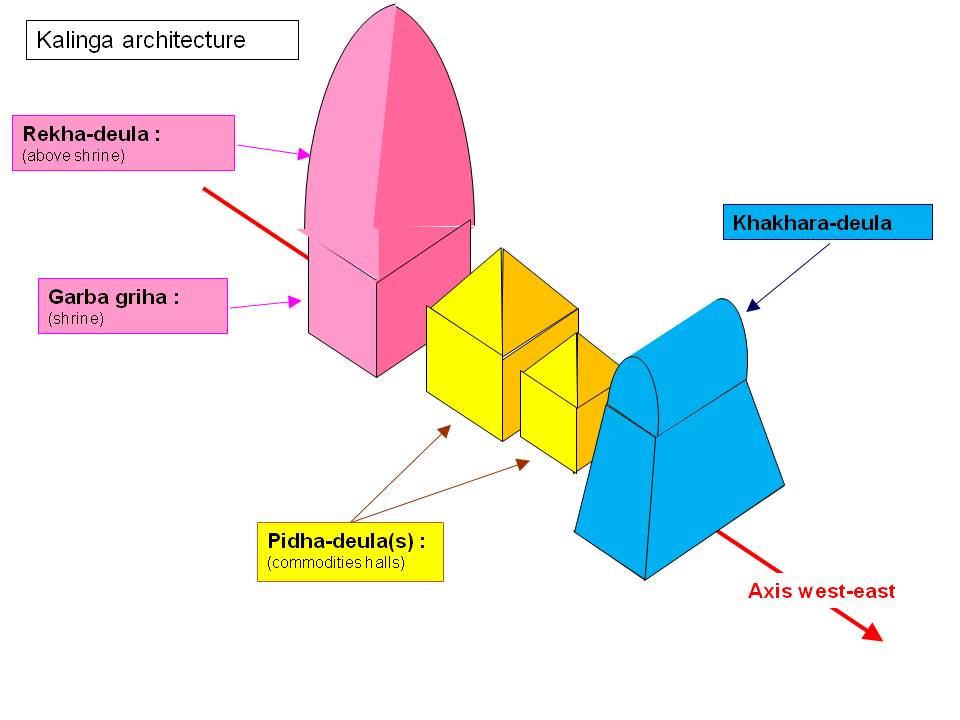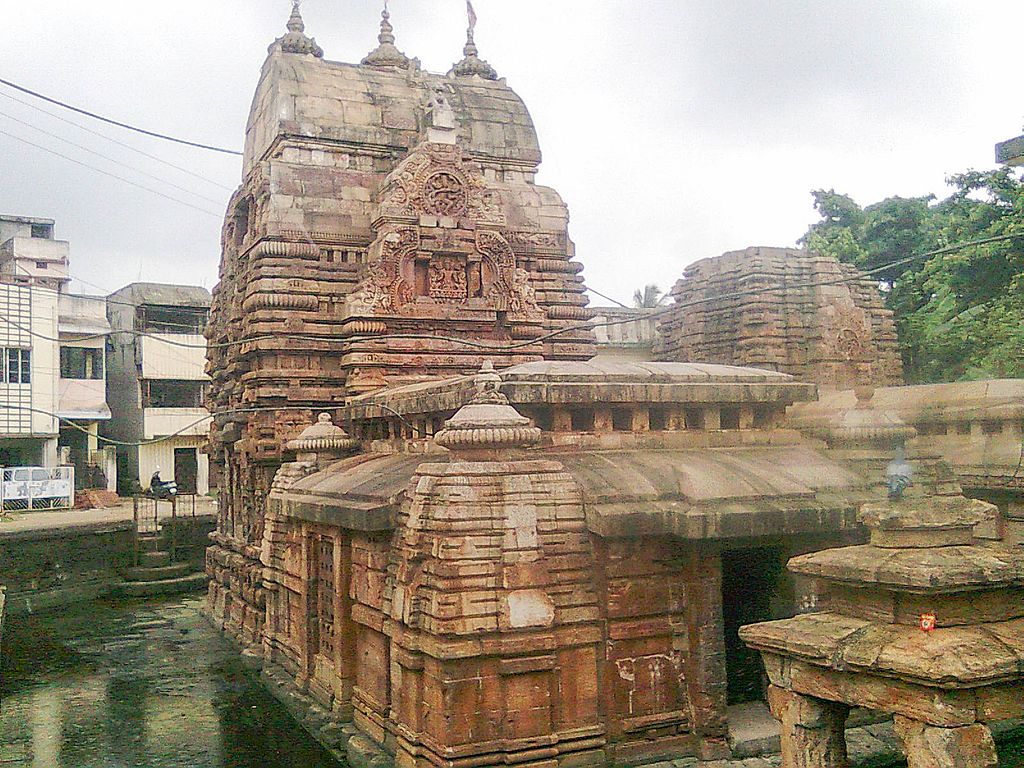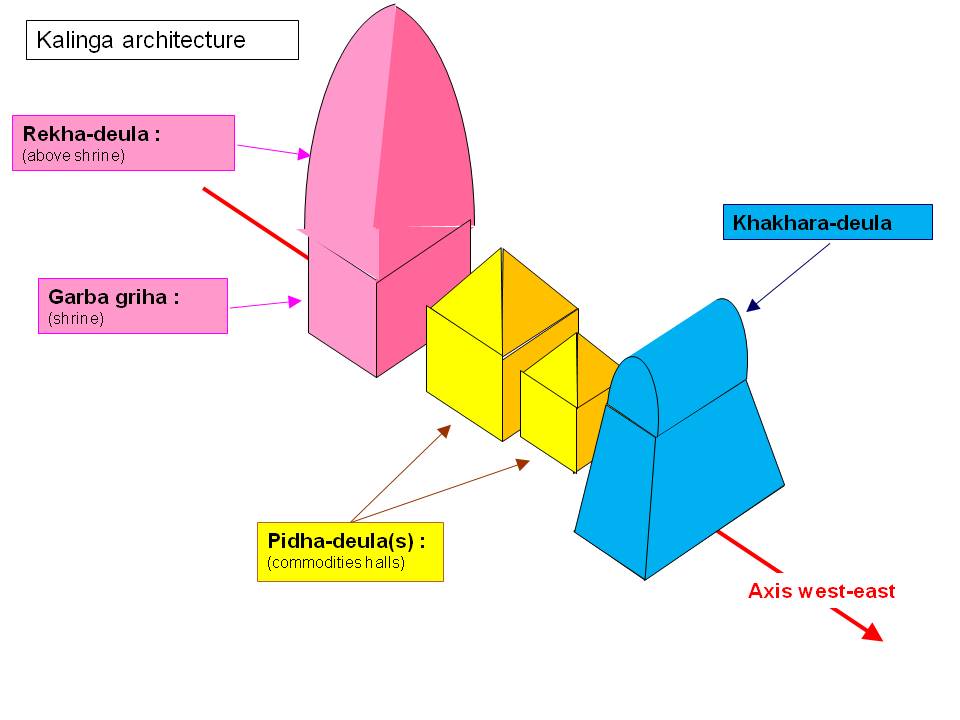The Odisha state, originally part of the Kalinga empire, has a line of bastions depicting the wonderful architecture of Kalinga, including many that lie in the Golden Triangle-that is, the three neighbouring cities of the state of Odisha- Bhubaneswar, Puri, and Konark. Kalingan architecture imbues stones with life. This format shows a non-parallel grandeur with beautiful and intricately carved structures. With unique images and carvings, each piece is so beautifully carved that it almost imparts life and soul into the stones.
The Kalinga style is defined as a subset under the Nagara group. This temple style was somewhat restricted within the then Kalinga area, modern-day Odisha, as the name implies.

There are two parts of a traditional Kalinga temple, a sanctuary in which an idol or linga is placed and a hall where believers can see the lord seated in the sanctuary.
The sanctuary is referred to as deul while the hall is known as jagamohana. Early period temples were devoid of jagamohanas. Since the existing temples were expanded at some later point by adding a jagamohana, the joint between these two components was thus not clear. The architects soon realized this and thus started constructing both the units, garbha-griha and jagamohana, together resulting in a unified joint.
More structures were introduced at a later period, when the temples were active in social occasions and festival celebrations. First emerged nata-mandira (dance hall), which was implemented with the original unit in the same lateral alignment. Nata-mandira was incorporated for dance performances normally held during festivals and special occasions, as the name implies. As the crowd grew and the temples began to grow larger and greater, a whole other hall, known as bhoga-mandira (kitchen), was installed. To make bhoga for the deity and the devotees, Bhoga-mandira was necessary Kalinga Architectural Style .
The temple style of Kalinga is commonly categorised into three major types, namely Rekha, Pidha, and Khakhara.
Rekha Deula
Rekha Deula is a tall structure with a sikhara or peak. The Lingaraj Temple of Bhubaneswar is perhaps the most prominent example of Rekha Deula. The Rekha Deula implies a sanctuary with various sections in a row. There is a vimana (structure containing the sanctum), jagamohana (assembly hall), nata mandira (festival hall) and bhoga-mandapa (offering hall) Kalinga Architectural Style in the Lingaraj Temple, each continuing to grow to its predecessor in height.
Pidha Deula
Pidha Deula refers to the square building with a pyramid-shaped roof, like the vimanas. Kalinga Architectural Style The assembly hall of the Konark Sun Temple is an example.
Khakhara Deula
The Khakhara Deula is an entirely different architectural style that strongly matches the Dravidian Gopuram architecture. The crown appears like a barrel- vaulted elongated roof, the term is derived from Khakharu (Pumpkin, gourd). Like the Gopuras, it is a rectangular building with a truncated pyramid-shaped roof. Temples of that kind are the temples of feminine deities like Shakti. The Baitala Deula of Bhubaneswar, dedicated to Chamunda, is one case. The Sakta temples are of the Khakhara order in general. Chaurasi Brahmi temple in Puri and Bhubaneswar Gouri temple are two other prominent examples of the temple of Khakhara Kalinga Architectural Style .
Almost all of the temples of Kalinga fall under the group of Rekha deula. Very few temples represent the style of Khakhara, usually devoted to a type of Devi. For jagamohanas, pidha-style is usually employed, but not for the principal deula.
Over a square (as in Rekha and Pidha) or a rectangular (as in Khakhara) plan, rise the walls of a temple above which is supported by the tower of the same. Four distinct divisions were formed from the base to the top, creating pitha, bada, gandi and mastaka. Pitha is the foundation over which the temple’s entire building stands. It was not a necessary part of a temple, and many temples do not have pitha in their system, both early and late. The vertical wall on which the tower is supported is Bada Kalinga Architectural Style . The bottom portion of the tower is Gandi and the top portion of the tower is mastaka.
In the Shilpa texts, the horizontal splits of the bada are also adequately described.
Bada is seen split into three sections, pabhaga, jangha and baranda, in early period temples. The lowest part of the bada is Pabhaga, linking it to pitha or directly to the field. A collection of mouldings is made up of Pabhaga. Early temples always had three Kalinga Architectural Style pabhaga mouldings, which later increased to four and five in temples later in the century. Khura, kumbha, pata, kani and vasanta are the names of these mouldings. Kalinga Architectural Style The primary and largest component of the Bada is Jangha.

It is the portion where most of the images Kalinga Architectural Style of subsidiary deities are placed. Baranda is a series of mouldings, ranging from seven to ten, connecting the bada to the gandi. The jangha portion was split into 2 floors in later period temples, tala-jangha and upara-jangha, divided by a madhya-bandhana.
The vertical exterior is divided into separate projections and crevices of the jangha. There were central and two edge projections in early Kalinga Architectural Style period temples, thus referred to as the tri-ratha style.
Each projection is known as a paga or ratha. The central projection is referred to as raha-paga and kanika-paga is corner projection. The elevation of their tower was maintained constantly low in early period temples, offering a squat or bulky look. Kalinga Architectural Style As time progressed, the tower height was given proper elevation, reaching to three-four times the length of the inner chamber.
Deul size was also increased to accomplish this, so the later period temples began to have pancha-ratha, sapta-ratha, and nav-ratha designs. An extra projection is inserted between kanika and raha, known as anartha-paga (anuratha-paga) in a Kalinga Architectural Style pancha-ratha pattern. The recess section is called anuraha between the pagas.
Additional projection in the sapta-ratha pattern is referred to as pratiratha-paga. Such pagas were decorated with niches that normally housed secondary deities. Usually, Raha-paga has a wide niche that houses parshva-devatas. In case of a temple dedicated to Shiva, among parshva devatas, Ganesha is placed on the south, Parvati Kalinga Architectural Style on the west and Kartikeya on the north. In some cases Parvati was replaced by Mahishasura-murti.
Gandi is the main distinguishing element for the different Kalinga temples.Gandi is constructed of a curved spire in a Rekha-deul, which arches inwards, sharper at the tip. This spire typically follows the same ratha pattern as the bada below, i.e. Kalinga Architectural Style three projections are also shown by the spire of a tri-ratha bada, thereby following the tri-ratha pattern.
Gandi is split into various levels that are noticeable on the kanika-paga. These tiers are referred to as bhumis. These various levels are divided by bhumi-amalas. Bisama Kalinga Architectural Style is the uppermost course of the gandi.
A pidha-deula Gandi is made up of overlapping stages, receding upwards, creating the form of a pyramid. In later temples, these tiers were arranged in group of twos separated by a recessed moulding known as kanthi. These group of tiers are referred to as potalas.
Gandi is topped with mastaka (head). A rekha-deul’s mastaka is composed of beki (neck), amla (ribbed-disk), khapuri (skull), kalasa (pot) and aidha (weapon). A pidha-deula mastaka consists of beki, ghanta (bell-shaped element), another beki, amala, khapuri, kalasa, and aidha.
Entrance doorways to the sanctum (garbha-griha) or jagamohana (hall) usually carry nava-grha (nine planets) over the lintel. In early period temples, usually only eight grahas were displayed, leaving Ketu. Later period temples started having nine grahas. Among the famous decoration motifs, a lion mask with beaded strings issued from his mount known as kirti-mukha is found on many temples.
You can read our another post on Progress of Bee Keeping in Odisha
Material Selection
For the architecture of Kalinga deula (temples), some groups of stones are typically considered auspicious. Some seven particular kinds of stones are described by Shilpa Chandrika, an ancient architecture text, as perfect and appropriate types to be used for certain portions of the temple:
Sahaṇa, Chhita Sāhaṇa, Baḍa Pagaḍa, Dhobā Kuṇḍa, Rasa Chiṇḍa, Niḷa Kusāṇa
Most Kalingan temples are constructed using these stones, while clay bricks have been used in very rare cases.
Conclusion
In its opulence and versatility, the Odisha Temple Architecture retains an attraction that is magnetic and almost stupefying. The bewildering heights of the heavily sculptured towers are as many grounds for marvel as the base-reliefs inside their various halls are intricately carved.
One can get an amazing experience of Odisha’s art and crafts, from the magnificent ruins of Konark to the extremely sanctified surroundings of the Jagannath and Lingaraj temples. They are the icons of the culture and heritage of Odisha which, even today, represents an eye-opener.

